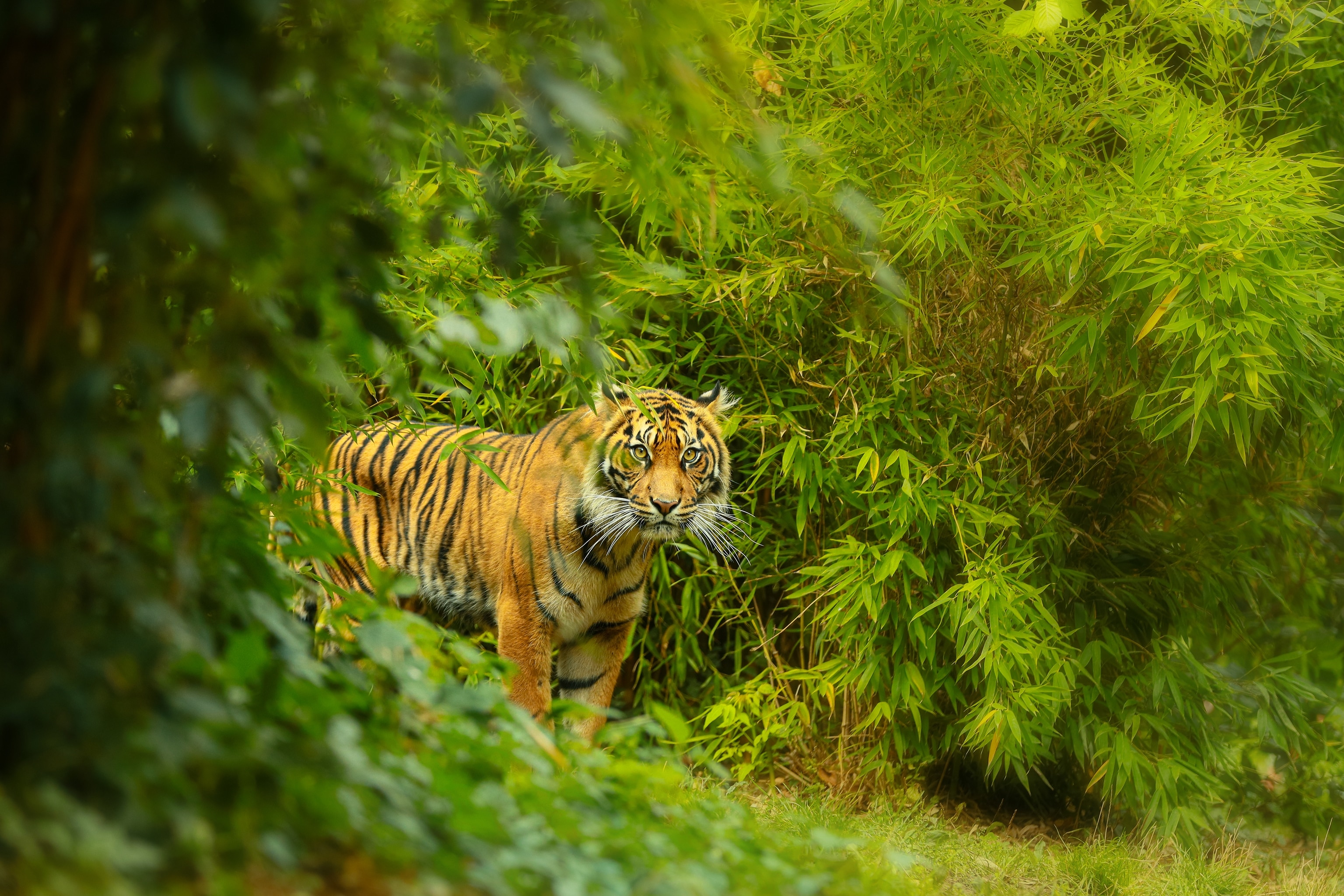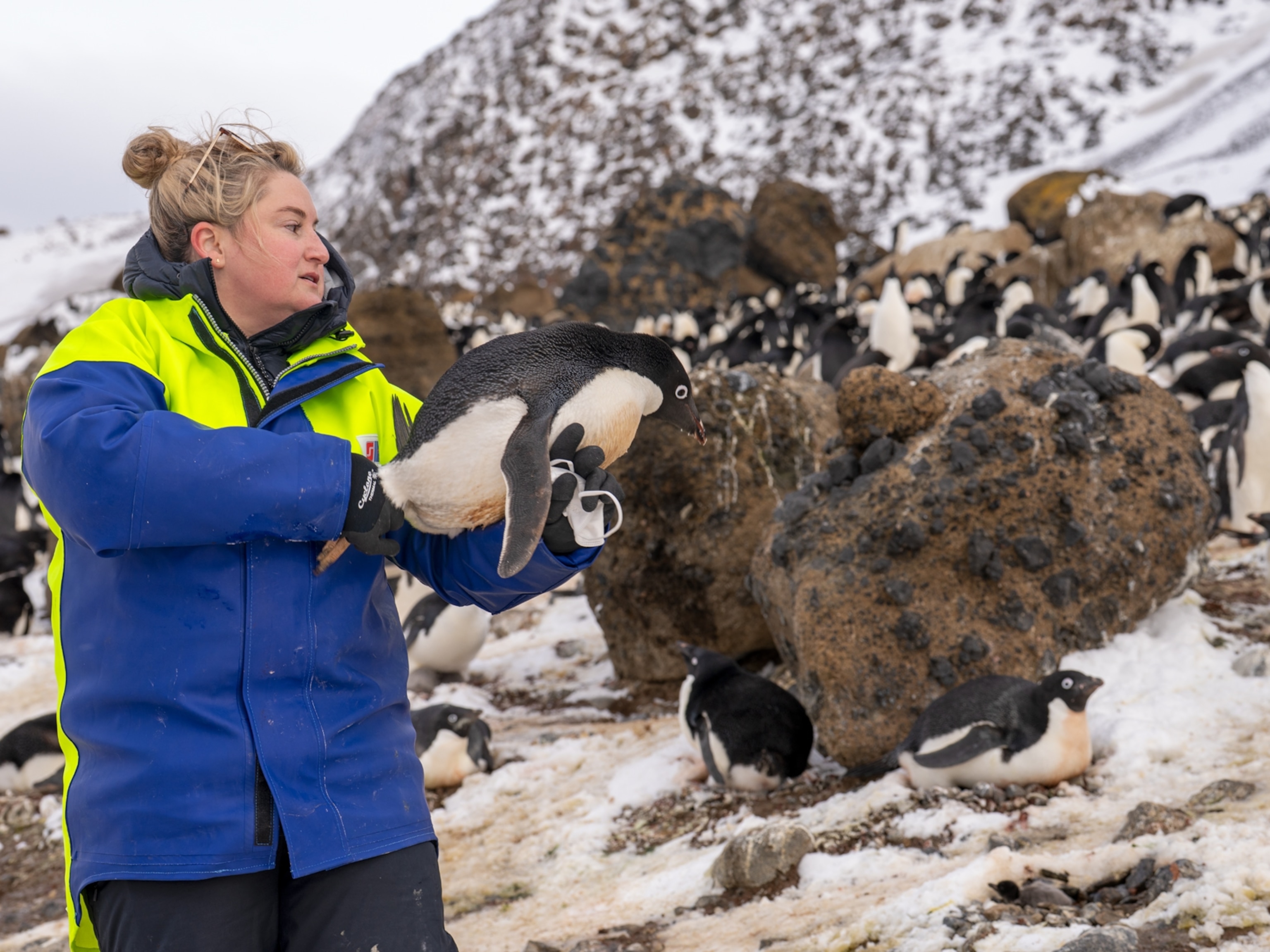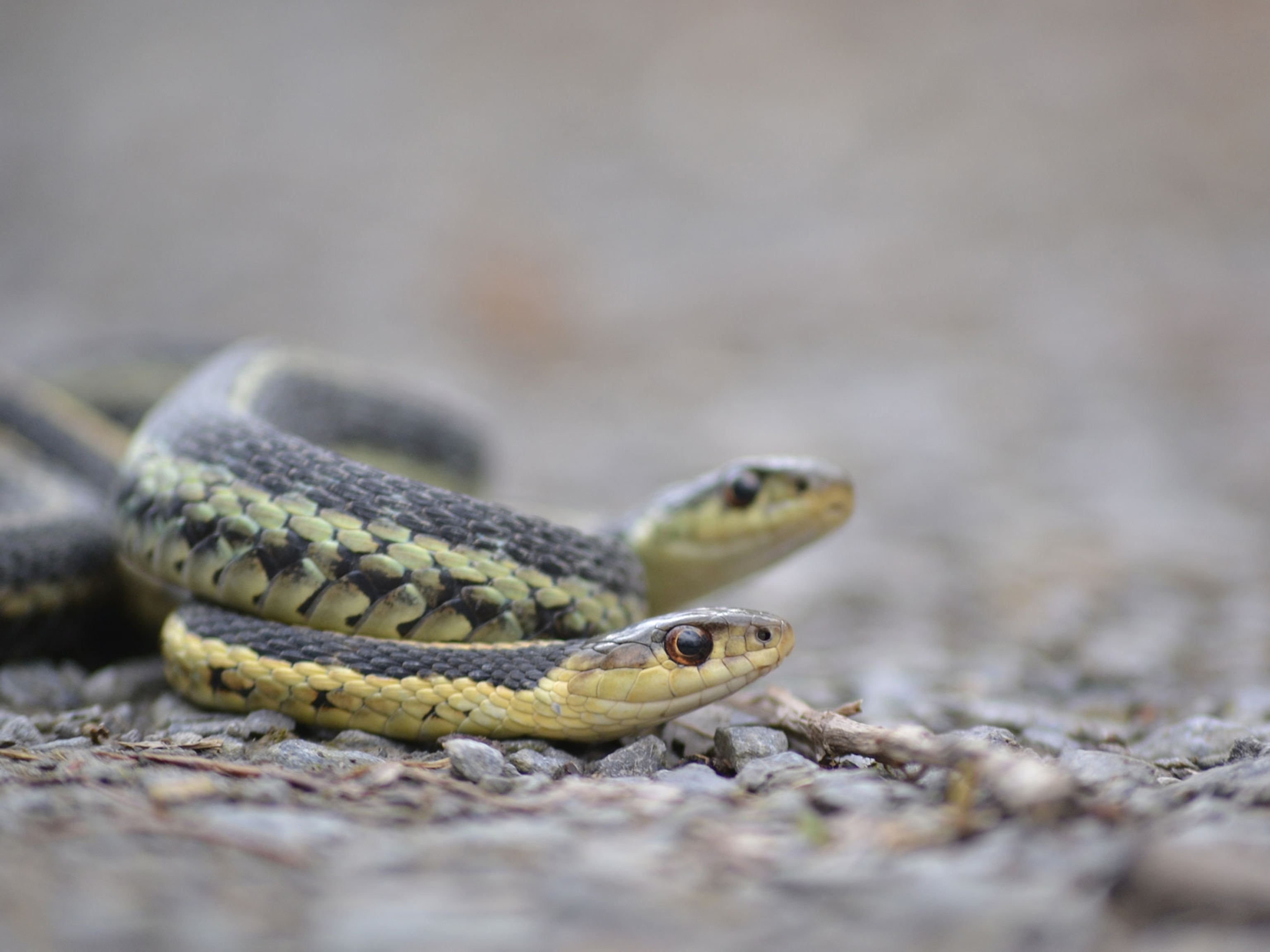Earth’s Most Interesting Animals
Explore the quirks, skills, and survival secrets of our planet’s most captivating creatures.

Before your visit, discover some of Earth's most captivating creatures found at the San Diego Zoo Safari Park, like the stealthy Sumatran tiger, the soaring California condor, and the resilient desert tortoise—each with its own fascinating traits that you can observe during your safari adventure.

Southern White Rhinoceros
The southern white rhino, nearly 99 percent of which are found in South Africa, Kenya, Namibia, and Zimbabwe, is one of the largest land animals on Earth, second only to elephants. Despite the name, these rhinos are gray, and "white" was likely derived from the Afrikaans word for "wide," referring to their broad, square mouths. These semi-social animals often live in groups; males are usually solitary and mark their territory with dung. White rhinos are grazers, and enjoy rolling in mud to cool off and protect their skin.

Sumatran Tiger
The critically endangered Sumatran tiger, native to Indonesia’s island of Sumatra, is the smallest of all tiger subspecies—possibly an adaptation to its dense, island habitat. Built for stealth over stamina, it relies on quiet, calculated ambushes rather than long chases, and is capable of sprinting up to 40 miles per hour in short bursts.

Desert Tortoise
Desert tortoises native to the southwestern U.S. and northwestern Mexico, thrive in extreme heat by digging burrows up to 30 feet long to escape the scorching sun. A desert tortoise can collect rainwater in grooves it digs in the ground, and survive for up to a year without fresh water by storing water in its bladder. While generally solitary, male tortoises occasionally fight for dominance, using the curved horns on the undersides of their shells to flip each other over; the defeated tortoise accepts its loss once it rights itself.

Platypus
The platypus is one of nature’s most curious creations, often described as looking like it's part duck, part beaver, and part otter. Native to Australia, it’s one of only two egg-laying mammals, with females nesting in burrows and nursing their young for three to four months after they hatch. In the water, the platypus hunts with its eyes, ears, and nostrils closed, using its sensitive bill to detect prey on the riverbed. Despite its playful look, the male platypus carries venomous spurs on its hind legs, making it as formidable as it is fascinating.

Przewalski’s Horse
Przewalski’s horses are considered by many to be the last truly wild horses, and were named after Russian explorer Nikolai Przewalski, who first encountered them during his expeditions in the late 1800s. These hardy horses roamed the grasslands of Asia and Europe for millennia before becoming extinct in the wild by the 1960s. Thanks to captive breeding and conservation efforts, they’ve been reintroduced, though some scientists now believe they may be descendants of domesticated horses that returned to the wild. Today, only around 2,000 Przewalski’s horses remain, living in social groups called harems led by a single dominant stallion and known for their strong family bonds, or in smaller "bachelor" groups of breeding-age males driven out of the harem by the stallion.

California Condor
The California condor, the largest flying bird in North America, has a wingspan of nearly 10 feet and can soar up to 15,000 feet. Once ranging across North America from coast to coast, California condors now live mainly in California, Arizona, Utah, and Mexico. These scavengers prefer feeding on large mammal carcasses and can travel hundreds of miles a day in search of food. With slow reproduction rates, the critically endangered condors faced near extinction, but captive breeding has helped boost their population.

Père David's Deer
Père David's deer, also known as milu in their native range, are large, stocky deer that thrive in cold, seasonally flooded conditions. With webbed hooves, these strong swimmers are at home in the water, and eat aquatic plants and grasses. Unlike other deer, their antlers have a front branch as large or larger than the rear-pointing one. Once extinct in the wild in their native China, the species survived in an imperial preserve in Beijing until it was destroyed by floods in the 19th century. The surviving deer were hunted and killed for food. French missionary Père Armand David had previously exported several of the deer to Europe, where a breeding program was established, and the species was saved. The deer were reintroduced to China in 1985.

Okapi
The okapi, often called the “forest giraffe,” is a shy and solitary animal found only in the Ituri Rainforest and other dense forests of the Democratic Republic of Congo. Though it resembles a mix between a zebra and a deer, it’s actually the giraffe’s closest living relative. Its striped rump helps the okapi blend into shafts of sunlight filtering through the trees, and its long, dark, prehensile tongue is perfect for stripping leaves from branches. With a four-chambered stomach and a diet of fruits, leaves, and even clay for minerals, the okapi is uniquely built for life in the rainforest.




